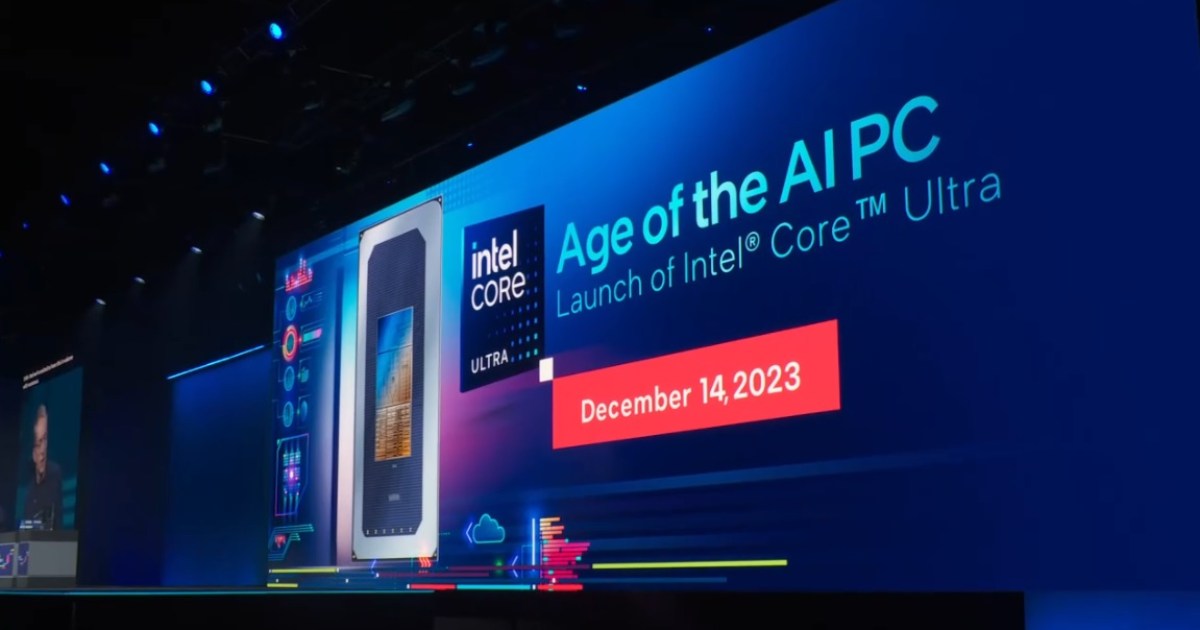Intel adds battery-saving tricks to Meteor Lake PC processor
Intel adds battery-saving tricks to Meteor Lake PC processor
Intel Unveils Meteor Lake: A Game-Changing Processor for Better Laptops
Image Source: Link
Laptops have become an integral part of our lives, powering our work, entertainment, and communication needs. However, one persistent challenge has always been battery life. Intel, a leading player in the processor industry, aims to tackle this issue with its upcoming Meteor Lake processor, set to be released later this year. The company revealed exciting new details about this revolutionary design at its recent Innovation conference, leaving tech enthusiasts buzzing with anticipation.
The Power-Efficient Chiplet
One of the key highlights of the Meteor Lake processor is the incorporation of a super low-power CPU chiplet. This innovative chiplet will enable laptops to run for extended periods without draining the battery excessively. Intel recognizes that consumers today place as much importance on battery life as they do on performance. With Meteor Lake, the company promises to deliver on both fronts, offering better laptops for Windows users.
Enhancements in CPU Design
Meteor Lake introduces an updated CPU design, aptly named the “compute tile.” This chiplet features a collection of CPU cores, divided into two categories: high-performance cores for demanding tasks and efficiency cores for lower-priority work. The CPU cores have undergone efficiency improvements and are manufactured using Intel’s new Intel 4 process, further enhancing their performance.
The Power of Shuffling
In addition to the performance-optimized CPU cores, Meteor Lake incorporates a separate “low power island” within its system-on-a-chip (SOC) chiplet. This island houses even more power-efficient CPU cores. The processor intelligently shuffles software tasks between the performance and efficiency cores, optimizing performance and maximizing battery life. When certain cores are not in use, they can be idled to conserve battery power. Tim Wilson, the engineering group vice president leading the SOC design, affirms that Meteor Lake will offer a perfect balance between performance and efficiency, making it an ideal choice for users who prioritize battery life.
Accelerating Graphics and AI
To cater to the modern computing needs, Meteor Lake also brings improvements in graphics processing unit (GPU) performance and artificial intelligence (AI) capabilities. With enhanced graphics acceleration on its GPU and a dedicated neural processing unit for AI tasks, the processor ensures optimum performance in activities like gaming, video editing, and AI-related tasks. Though high-end language models like ChatGPT still require more powerful machines, Meteor Lake’s AI acceleration technology can enhance tasks such as background removal in video conferences and subject selection in photo editing applications like Adobe Lightroom.
TSMC: Competitor and Partner
Intel faces fierce competition from rivals such as Taiwan Semiconductor Manufacturing Co. (TSMC) and Samsung, both of whom have surpassed Intel’s manufacturing capabilities over the years. Interestingly, TSMC, which competes with Intel, is also a strategic partner, manufacturing most of Meteor Lake’s chiplets. TSMC builds the SOC tile and handles tasks like video decoding, AI acceleration, and Wi-Fi systems using its N6 manufacturing process. The more advanced N5 process from TSMC is employed for Meteor Lake’s Arc GPU system. Intel’s plans to become a foundry, like TSMC and Samsung, capable of producing chips for other customers, is an integral part of their future roadmap.
The Rise of Chiplets
Meteor Lake’s “disaggregated” design, enabled by Intel’s chiplet-stacking technology called Foveros, is a sign of the future of processors. This approach involves stacking chiplets with different functionalities, allowing for optimization in terms of power consumption, cost, and performance. While other companies like AMD and Apple have also adopted chiplet strategies, Intel’s aggressive approach is driven by its need to catch up with competitors. The Sapphire Rapids Xeon chip and the forthcoming Meteor Lake will predominantly consist of chiplets, showcasing Intel’s commitment to this innovative design.
Empowering Advanced Packaging
Intel’s expertise in advanced packaging technology is another aspect that sets it apart. At the Innovation conference, the company showcased its glass substrate technology, providing advantages in terms of speed, power efficiency, and size. While Meteor Lake does not utilize glass substrates, this display underscores Intel’s packaging capabilities. The company has implemented intelligent solutions, like variably sized solder balls, to counteract the natural warping of processors and ensure optimal electrical contact. Intel’s commitment to advancing packaging technologies indicates its vision for the next five to ten years.
As the processor landscape continues to evolve, Intel’s Meteor Lake offers a promising glimpse into the future of computing. With improved CPU design, power efficiency through chiplets, and advancements in graphics and AI capabilities, this processor has the potential to revolutionize the laptop experience. Intel’s collaboration with TSMC, combined with its expertise in packaging technology, further strengthens its position for delivering high-performance, energy-efficient processors. The arrival of Meteor Lake marks an important milestone in Intel’s journey to reclaim its leadership in the processor market, promising better laptops for millions of users worldwide.






